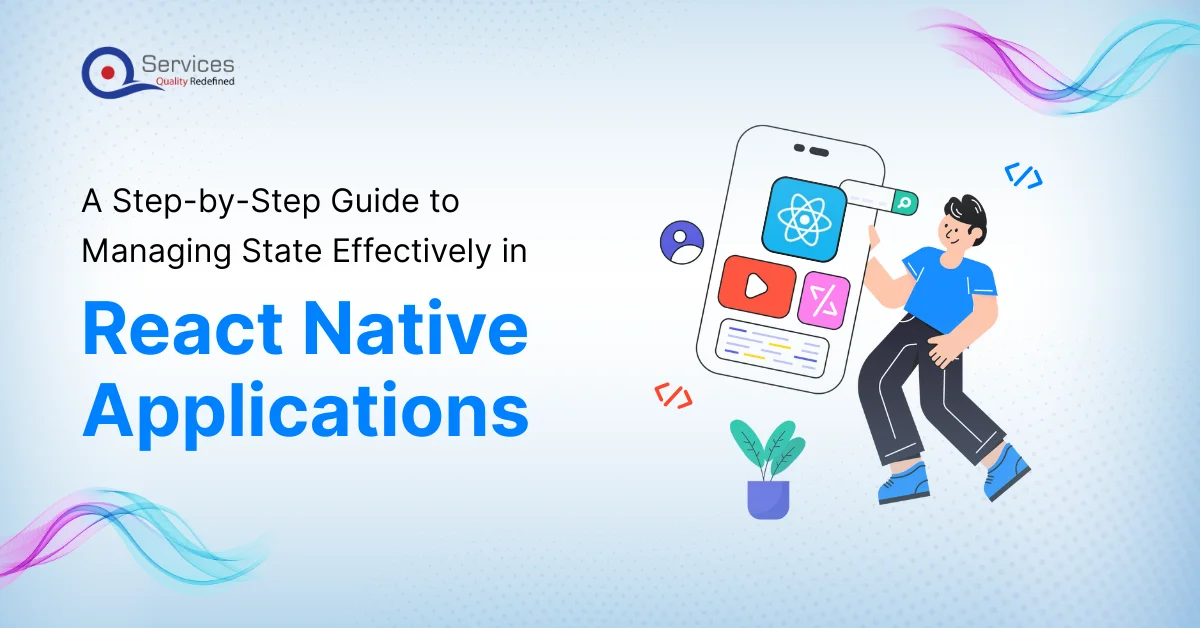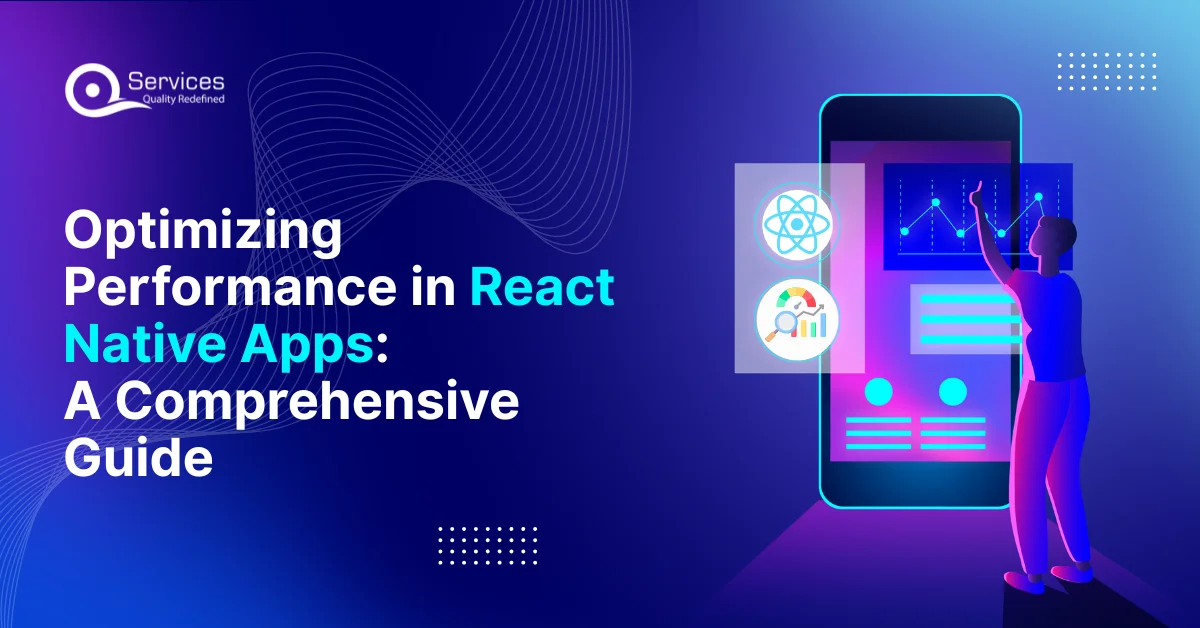
Rewards
.





CANADA
55 Village Center Place, Suite 307 Bldg 4287,
Mississauga ON L4Z 1V9, Canada
Certified Members:
.




Azure Cosmos DB is a fully managed NoSQL, Non-Relational database service provided by Microsoft Azure, designed for modern application development. It’s engineered to offer flexibility, scalability, and high performance, making it a cornerstone in the Azure ecosystem. By supporting multiple data models and APIs, Cosmos DB ensures smooth integration and operational efficiency by meeting a variety of application needs.
Azure Cosmos DB is an excellent choice for creating responsive, globally distributed applications, including e-commerce platforms, IoT solutions, gaming systems, and real-time analytics.
Developers are increasingly adopting the Cosmos database and Azure document database for modern applications due to several key factors:
Cosmos DB’s automatic data replication across multiple Azure regions ensures low-latency access to data for users worldwide. This global distribution capability makes it ideal for building responsive applications.
Example: A global online gaming platform can use Cosmos DB to store player profiles and game state. Players in Asia and North America can access the nearest database replica, ensuring fast game performance for all users.
The cosmos database offers instant scalability for both throughput and storage, supporting serverless and provisioned throughput modes. This allows developers to handle varying workloads efficiently without compromising performance.
Example: An e-commerce website experiencing increased traffic during Black Friday can use Cosmos DB’s autoscale throughput to ensure consistent performance for millions of users, even during peak hours.
Numerous data models, including as document, key-value, graph, and column-family, are supported by Cosmos DB. This flexibility enables developers to choose the most suitable model for their applications, streamlining development.
Azure document database provides SLAs for latency, throughput, availability, and consistency. These performance guarantees ensure that applications run reliably and predictably under different workloads.
With five consistency levels (strong, bounded staleness, session, consistent prefix, and eventual), Cosmos DB allows developers to optimize the balance between performance and data consistency according to their application’s needs.
Cosmos DB integrates seamlessly with popular Azure services and offers SDKs for various programming languages. This simplifies the development process and allows developers to leverage the existing Azure ecosystem.
The Azure document database is suitable for a wide range of applications, including e-commerce platforms, IoT solutions, gaming systems, and real-time analytics. Its versatility makes it a popular choice for developers working on diverse projects.
Example: A social media platform can use the document model for user profiles, the graph model to manage user relationships, and the key-value model to store session data.
By addressing the critical needs of modern application development, the Cosmos database and Azure document database have become preferred choices for developers looking to build scalable, responsive, and globally distributed applications.
At its core, Cosmos DB is a globally distributed database that allows developers to elastically scale throughput and storage across any number of Azure regions with a few clicks. It guarantees low-latency data access, making it ideal for applications requiring high availability and real-time responsiveness. Azure Cosmos DB supports five consistency models—strong, bounded staleness, session, consistent prefix, and eventual—allowing developers to fine-tune the balance between consistency and performance based on their application’s requirements.
Multi-Model Support:Cosmos DB’s multi-model capability means it supports various data models, including:
Document: Ideal for storing and querying JSON documents, suitable for content management systems and e-commerce catalogs.
Graph: Utilizing the Gremlin API, the azure graph database is perfect for applications requiring rich relationships and networks, such as social networks and recommendation engines.
Key-Value: Similar to traditional key-value stores, this model is used for scenarios requiring simple key-based look-ups, like caching and session management.
Column-Family: Inspired by Big-table, this model is suitable for scenarios where data is stored in rows and columns, such as event logging and telemetry data.
Azure Cosmos DB provides several APIs to interact with the data, catering to different application needs:
SQL API: Leverages SQL-like query capabilities to interact with JSON documents. It’s highly intuitive for developers familiar with relational databases.
Documentation: NoSQL queries – Azure Cosmos DB for NoSQL | Microsoft Learn
Reference: Azure Cosmos DB: SQL .NET API, SDK & resources | Microsoft Learn
MongoDB API: Offers compatibility with MongoDB, allowing applications built on MongoDB to leverage Cosmos DB’s benefits without modification.
Documentation: Introduction/Overview – Azure Cosmos DB for MongoDB | Microsoft Learn
Cassandra API: Enables the use of Cassandra query language (CQL) to interact with column-family data models, providing scalability and distribution similar to Apache Cassandra.
Documentation: Introduction/Overview – Azure Cosmos DB for Apache Cassandra | Microsoft Learn
Table API: Compatible with Azure Table Storage, it allows for the migration of existing applications to Cosmos DB with minimal changes.
Documentation: Introduction/Overview – Azure Cosmos DB for Table | Microsoft Learn
Gremlin API: Supports graph traversal queries, ideal for handling graph data models and exploring complex relationships within the data.
Documentation: Introduction/Overview – Azure Cosmos DB for Apache Gremlin | Microsoft Learn
In summary, Azure Cosmos DB stands out in the Azure ecosystem as a versatile, powerful, and highly scalable database service, empowering developers to build and manage modern applications with ease and efficiency.
Setting up Azure Cosmos DB is a straightforward process that allows developers to leverage a powerful NoSQL database service for various application needs. To assist you in getting started, below is a detailed guide:
If you don’t already have an Azure account, you’ll need to create one. Follow these steps:
1.Go to the [Azure Sign-Up Page]:
Create Your Azure Free Account Or Pay As You Go | Microsoft Azure
2. Click on the “Start free” button.
3. Create your account by following the on-screen directions. This will include providing personal information and setting up payment details.
1.Once your Azure account is set up, navigate to the [Azure Portal]
2.In the Azure Portal, click on the “Create a resource” button located in the upper-left corner.
3.In the “Search the Marketplace” box, type “Azure Cosmos DB” and select it from the dropdown.
4. Click on the “Create” button to start the creation process.
When creating a Cosmos DB account, you need to select an API based on your specific use case:
1. SQL API: Choose this for applications that need SQL-like query capabilities to interact with JSON documents. It’s intuitive for developers familiar with relational databases.
2. MongoDB API: Select this if you are migrating an application from MongoDB or need compatibility with MongoDB drivers and tools.
3. Cassandra API: Opt for this if you require compatibility with Cassandra Query Language (CQL) and need to interact with column-family data models.
4. Table API: Suitable for applications using Azure Table Storage, allowing for easy migration with minimal changes.
5. Gremlin API: Ideal for applications that require graph traversal queries and complex relationship handling within data.
1. Account Name: Enter a unique name for your Cosmos DB account.
2. API: Select the desired API (SQL, MongoDB, Cassandra, Table, or Gremlin) based on your use case.
3. Location: Choose the Azure region where you want your database to be located. Consider proximity to your users for lower latency.
4. Capacity Mode: Decide between Provisioned Throughput (pre-defined RU/s) and Serverless (pay-per-request) based on your workload and budget.
5. Apply Tags (optional): Tags can help you organize and manage your resources.
Click on the “Review + create” button, then click “Create” on the final screen to provision your Cosmos DB account.
Choosing the right API is crucial for optimizing performance and ensuring compatibility with your application:
– SQL API: Ideal for applications that need complex querying capabilities using SQL syntax, such as e-commerce sites or content management systems.
– MongoDB API: Perfect for developers familiar with MongoDB or existing applications built on MongoDB, enabling seamless migration and continuity.
– Cassandra API: Suitable for applications that rely on the distributed nature of Cassandra, such as large-scale data analytics platforms.
– Table API: Great for applications previously using Azure Table Storage, facilitating easy transition to a more robust platform.
– Gremlin API: Best for scenarios involving graph data models, such as social networks or recommendation systems, where exploring relationships between entities is critical.
By selecting the appropriate API, you can leverage the specific strengths of Azure Cosmos DB to meet your application’s requirements.
You’ll be well on your way to utilizing Azure Cosmos DB’s full capabilities if you follow these instructions.
Get free Consultation and let us know your project idea to turn into an amazing digital product.

Let’s create our first Azure Cosmos DB
Once the account is created, go to the “Data Explorer” section.
Click on “New Database” to create a new database.
Next, click on “New Container” to create a container within the database.
Enter a Database ID and click “OK”.
Enter a Container ID and set the Partition Key (e.g., /userId).
Set the Throughput as needed and click “OK”.
Azure Cosmos DB offers a robust platform for developing scalable, high-performance applications. To maximize its potential, developers should follow best practices in partitioning, indexing, scaling throughput, and implementing proper error handling and retry mechanisms. Here’s a detailed guide to help you get the most out of Cosmos DB in your development projects.
Choosing the right partition key is crucial for optimizing performance and scalability. Here’s how to do it effectively:
Select a partition key with high cardinality to ensure even data distribution. A high-cardinality key has many unique values, preventing hotspots and balancing the workload across partitions.
Consider the access patterns of your application. Frequently queried fields make good partition keys, as they localize queries to a single partition, reducing latency. For example, in a user-centric application, using `userId` as the partition key ensures all data related to a user is stored together.
Ensure the partition key supports write scalability. If your application experiences heavy writes, the partition key should allow writes to be evenly distributed across partitions. Avoid using fields with low cardinality or fields that might create hotspots.
Think about the future growth of your data. A well-chosen partition key accommodates data expansion without performance degradation.
Indexing in Cosmos DB is essential for query performance but must be balanced against storage costs:
By default,Cosmos DB indexes all properties in your items, which is convenient but might be excessive for some applications. Evaluate whether automatic indexing meets your needs or if manual indexing is more appropriate.
Define custom indexing policies to include or exclude specific properties. For example, if only certain fields are frequently queried, you can exclude other fields to save on storage and indexing costs.
Customize indexing paths to control which properties are indexed and how they are indexed. Use `Include` and `Exclude` paths to refine indexing further. For example:
Use TTL to automatically delete items after a specified period, reducing storage costs for temporary or less frequently accessed data.
Properly scaling throughput ensures your application remains responsive under varying workloads:
Set a fixed amount of Request Units per second (RU/s) based on expected traffic. This is cost-effective for predictable workloads. Monitor usage patterns and adjust throughput as needed to avoid over-provisioning.
Use autoscale to automatically adjust RU/s based on real-time usage patterns. This is ideal for applications with fluctuating demand, ensuring cost-efficiency while maintaining performance. Autoscale automatically increases throughput during peak times and reduces it during off-peak periods.
Use Azure Monitor to track throughput usage and set up alerts for throttling events or unusual activity. This helps proactively manage capacity and avoid performance issues.
Robust error handling and retry mechanisms are essential for building resilient applications:
Implement retry logic for transient faults, such as rate-limiting (HTTP 429) and service unavailability (HTTP 503). Use an exponential backoff strategy to avoid overwhelming the service:
Implement fallback mechanisms to gracefully handle errors. For example, if a query fails, return a cached or default response to maintain user experience.
Track and log errors for analysis. Use Azure Application Insights to gain insights into application performance and identify areas for improvement.
By adhering to these best practices, developers can optimize the performance, scalability, and resilience of their applications using Azure Cosmos DB. Selecting an appropriate partition key, balancing indexing with cost, scaling throughput efficiently, and implementing robust error handling and retry mechanisms are key to leveraging the full potential of Cosmos DB in your development projects. Following these guidelines will ensure your application is well-prepared to handle growth and provide a seamless user experience.
When working with Azure Cosmos DB, developers may encounter several challenges, especially if they are new to this powerful NoSQL database service. Here are some common issues and actionable solutions to help you overcome them:
Problem: Choosing an inappropriate partition key can lead to uneven data distribution, hot partition problems, and performance issues. If a partition key has low cardinality (few unique values) or if most of the data gets concentrated in a few partitions, it can cause bottlenecks.
Solution:
Select a partition key with high cardinality to ensure even distribution of data across all partitions. For example, `userId` often works well in user-centric applications because each userId is unique.
Analyze your application’s access patterns. Choose a key that is frequently used in queries. This minimizes cross-partition queries and reduces latency.
Consider how your data and application might grow. Choose a partition key that will scale well with increasing data volume and user base.
Example: In an e-commerce application, using `productId` as a partition key may not be ideal due to potential uneven distribution. Instead, `userId` can ensure that user-specific data is grouped together, balancing the load more effectively.
Problem: Incorrect throughput settings can lead to throttling, increased latency, and higher costs. Over-provisioning throughput results in unnecessary expenses, while under-provisioning can cause performance degradation.
Solution:
Monitor and understand your application’s workload patterns. Use Azure Monitor to track metrics and determine the required throughput.
Use autoscale to dynamically adjust the throughput based on demand. This ensures cost-efficiency and optimal performance, especially for applications with fluctuating traffic.
For predictable workloads, manually provision throughput based on peak usage. Regularly review and adjust the settings to match the actual demand.
Example: For a blog application with predictable traffic, you might manually set the throughput during peak hours and lower it during off-peak times. On the other hand, an event-driven application with unpredictable spikes in traffic would benefit more from autoscale throughput.
Problem:
Integrating with Cosmos DB using various APIs (SQL, MongoDB, Cassandra, Table, Gremlin) can be challenging due to differences in data models, query languages, and SDKs. Misconfigurations or compatibility issues often lead to errors and unexpected behaviors.
Solution:
Always use the latest official SDKs provided by Azure for the specific API you are working with. This ensures compatibility and access to the latest features.
Perform thorough testing in a development environment before deploying to production. Use the Azure Cosmos DB Emulator for local development and testing.
Implement extensive logging and monitoring to capture API interactions. Use Application Insights to track errors and performance metrics.
Leverage detailed documentation and quickstart guides provided by Azure. This includes configuration settings, usage examples, and troubleshooting tips.
Example: When integrating a MongoDB-based application with Cosmos DB, ensure you use the MongoDB API and corresponding SDK. Test the compatibility of queries and data structures to identify any discrepancies early.
Additional Tips:
– Error Handling and Retries: Implement robust error handling and retry logic for transient failures like rate limiting (HTTP 429). Use exponential backoff strategies to manage retries efficiently.
– Optimize Queries: Regularly review and optimize queries. Ensure that queries are designed to utilize indexes effectively and minimize cross-partition queries.
– Data Modeling: Design your data model to align with your application’s requirements. Consider the types of queries you will run and how data will be accessed and updated.
By understanding and addressing these common challenges, developers can ensure a smoother experience when starting with Azure Cosmos DB. Selecting the right partition key, configuring throughput appropriately, and effectively integrating APIs are crucial steps in leveraging the full potential of Cosmos DB. With these actionable solutions, you can build scalable, high-performance applications while avoiding common pitfalls.
Microsoft’s Azure Cosmos DB certification is a great way to validate your skills in designing, implementing, and monitoring cloud-native applications that store and manage data. The Microsoft Certified: Azure Cosmos DB Developer Specialty certification ensures that you have the expertise to work with Azure Cosmos DB effectively.
Link: Microsoft Certified: Azure Cosmos DB Developer Specialty – Certifications | Microsoft Learn
Share your project idea with us. Together, we’ll transform your vision into an exceptional digital product!

Azure Cosmos DB is an excellent choice for your next project, offering global distribution, low-latency access, and seamless scalability. It supports multiple data models (document, key-value, graph, and column-family) to provide flexibility and high performance. With guaranteed SLAs for latency, throughput, availability, and consistency, you can rely on it for predictable operations. Its easy integration with other Azure services and support for various programming languages make it a developer-friendly option. Whether you’re building an e-commerce platform, IoT solution, gaming system, or real-time analytics application, Azure Cosmos DB has the robust features you need. Give it a try!
Azure Cosmos DB is a cloud-based database service by Microsoft that helps store and manage NoSQL data. It offers high speed, global reach, and strong reliability.
It has features like worldwide data distribution, automatic scaling, support for different types of data models, and strong performance guarantees.
Yes, it works with multiple data formats such as documents, key-value pairs, graphs, and column-family structures. It supports APIs like SQL, MongoDB, Cassandra, Gremlin, and Table.
You can create an account through the Azure portal, Azure CLI, or PowerShell by selecting the required API and region.
A container is a flexible storage space that holds data. It can be structured as a collection, table, or graph depending on the selected API.
Data is divided into smaller sections (partitions) based on a key, making it easier to scale and process efficiently.
There are five options: Strong, Bounded Staleness, Session, Consistent Prefix, and Eventual. These allow you to balance accuracy and speed.
You can use SQL-like queries with the SQL API or interact with data through other APIs like MongoDB, Cassandra, Gremlin, and Table.
It automatically scales, provides fast response times, and supports various data models, making it great for high-performance applications.
It uses encryption for stored and transferred data, role-based access controls, and integrates with Azure Active Directory for authentication.

State management in React Native is the handling and control of data in a mobile application. It is the dynamic data that affects the behavior and look of components, including user input, data fetched from APIs, or the state transitions. Controlling this efficiently ensures that

The combination of Microsoft AI, Azure Health Insights, and Azure Cognitive Services is transforming healthcare by allowing smarter and efficient decision-making based on data. These technologies can fundamentally change the conventional practices of healthcare by taking new approaches to enhance

The rising need for top-notch mobile apps has made it essential to boost React Native applications. A smooth-running app gives users a great experience, cuts down on slowdowns, and uses fewer resources. This matters a lot for mobile devices that don’t have as much processing power or memory.
Schedule a Customized Consultation. Shape Your Azure Roadmap with Expert Guidance and Strategies Tailored to Your Business Needs.
.





55 Village Center Place, Suite 307 Bldg 4287,
Mississauga ON L4Z 1V9, Canada
.




Founder and CEO

Chief Sales Officer

🎉 Thank you for your feedback! We appreciate it. 🙌